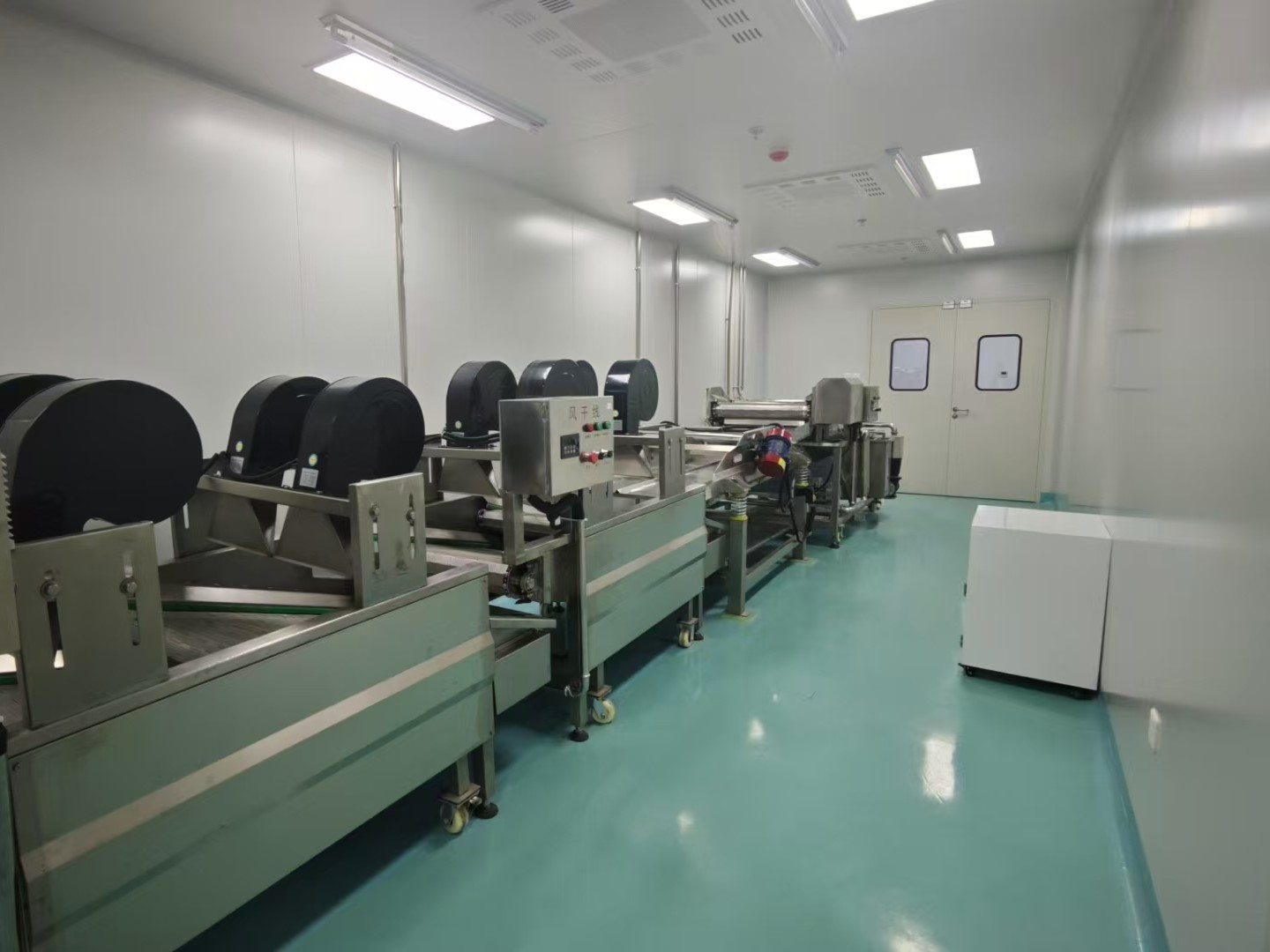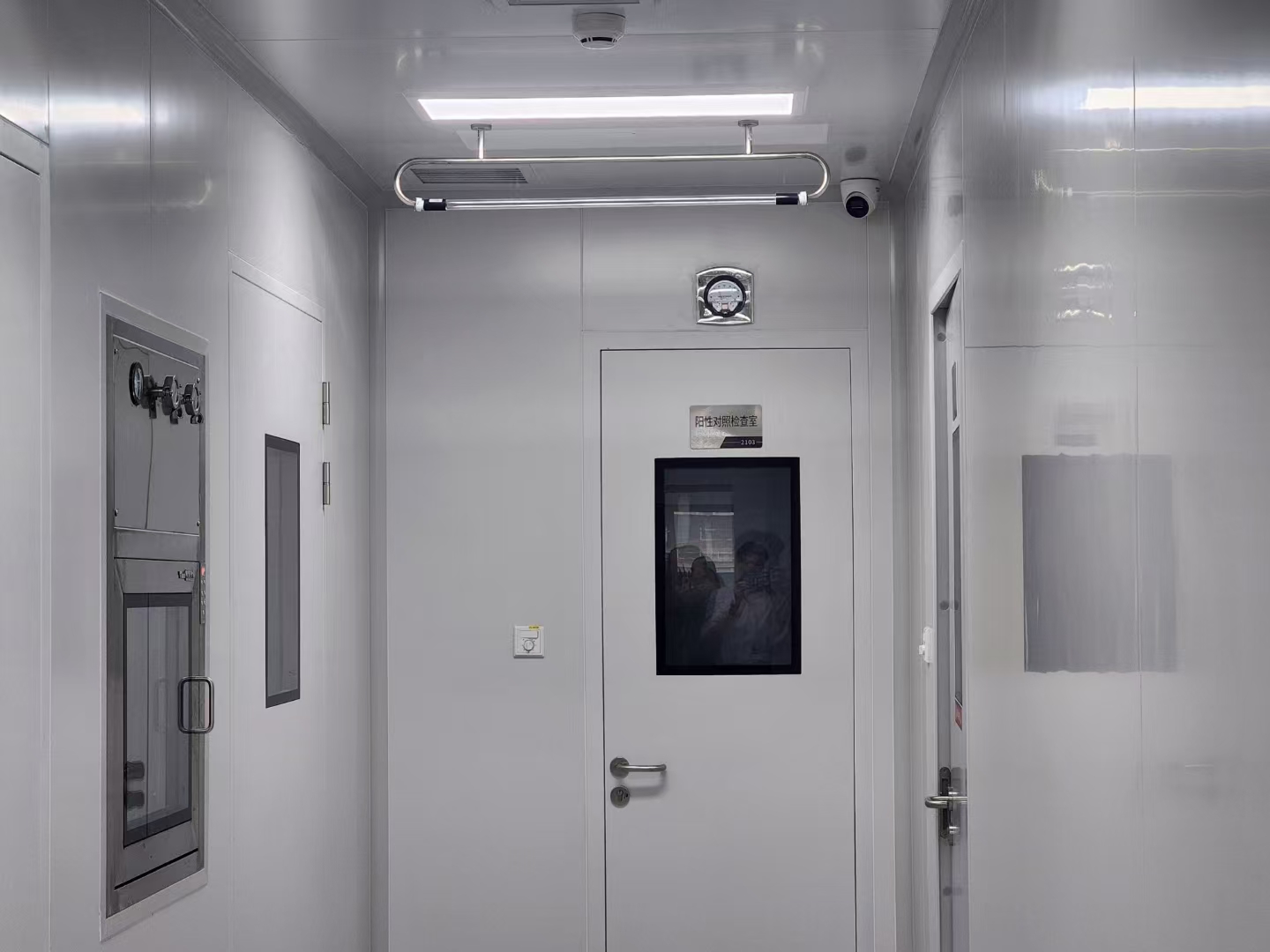

The appropriate value of the supply air volume in cleanroom is not fixed, but depends on multiple factors, including the cleanliness level, area, height, number of personnel, and process requirements of the clean workshop. The following are general guidelines based on comprehensive consideration of different factors.
1. Cleanliness level
Determine the number of air changes according to the cleanliness level: The number of air changes in cleanroom is one of the key factors in determining the supply air volume. According to relevant regulations, cleanrooms of different cleanliness levels have different air change requirements. For example, class 1000 cleanroom is not less than 50 times/h, class 10000 cleanroom is not less than 25 times/h, and a class 100000 cleanroom is not less than 15 times/h. These air change times are static requirements, and some margin may be left in actual design to ensure the cleanliness of the clean workshop.
ISO 14644 standard: This standard is one of the commonly used cleanroom air volume and air velocity standards internationally. According to the ISO 14644 standard, cleanrooms of different levels have different requirements for air volume and wind speed. For example, ISO 5 cleanroom requires air velocity of 0.3-0.5m/s, while ISO 7 cleanroom requires air velocity of 0.14-0.2m/s. Although these air velocity requirements are not completely equivalent to the supply air volume, they provide an important reference for determining the supply air volume.
2. Workshop area and height
Calculate the volume of the clean workshop: The calculation of the supply air volume needs to take into account the area and height of the workshop to determine the total volume of the workshop. Use the formula V = length*width*height to calculate the volume of the workshop (V is the volume in cubic meters).
Calculate the air supply volume in combination with the number of air changes: Based on the workshop volume and the required number of air changes, use the formula Q = V*n to calculate the supply air volume (Q is the supply air volume in cubic meters per hour; n is the number of air changes).
3. Personnel and process requirements
Personnel fresh air volume requirements: According to the number of personnel in cleanroom, the total fresh air volume is calculated according to the fresh air volume required per person (usually 40 cubic meters per person per hour). This fresh air volume needs to be added to the supply air volume calculated based on the workshop volume and air changes.
Process exhaust volume compensation: If there are process equipment in cleanroom that needs to be exhausted, the supply air volume needs to be compensated according to the exhaust volume of the equipment to maintain the air balance in clean workshop.
4. Comprehensive determination of supply air volume
Comprehensive consideration of various factors: When determining the supply air volume of the cleanroom, all the above factors need to be considered comprehensively. There may be mutual influence and restriction between different factors, so comprehensive analysis and trade-offs are required.
Space reservation: In order to ensure the cleanliness and operational stability of the cleanroom, a certain amount of air volume margin is often left in the actual design. This can cope with the impact of emergencies or process changes on the supply air volume to a certain extent.
In summary, the supply air volume of the cleanroom does not have a fixed suitable value, but needs to be comprehensively determined according to the specific situation of the clean workshop. In actual operation, it is recommended to consult a professional cleanroom engineering company to ensure the rationality and effectiveness of the supply air volume.
Post time: Jul-07-2025

